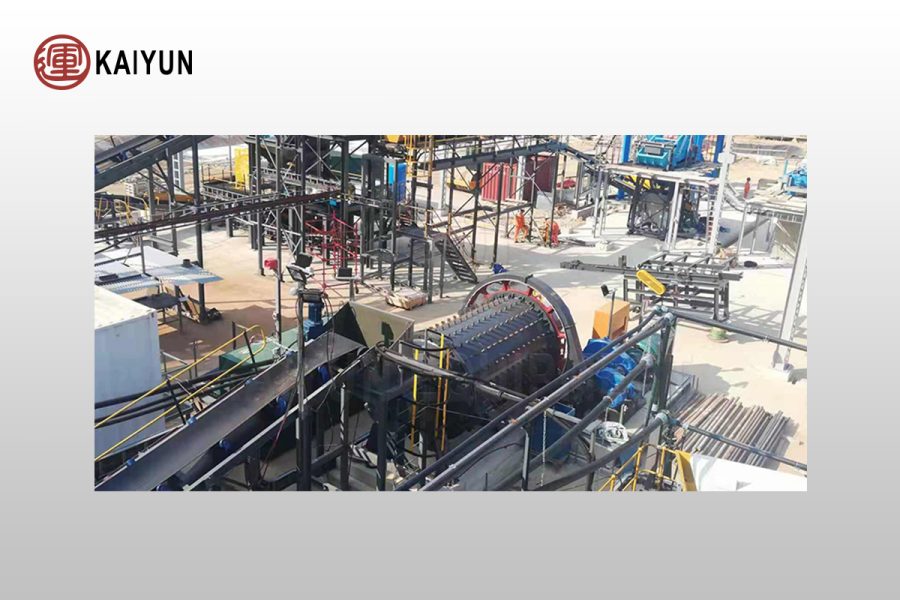Introduction
Mineral processing plants serve as the core component of mineral resource development, and their life cycle management directly impacts resource utilization rates, production efficiency, and environmental sustainability. However, from initial planning to final closure, these facilities face numerous challenges. This article provides an in-depth exploration of the main issues encountered at various stages of a processing plant’s life cycle and offers professional solutions to help optimize operations and enhance overall value.

Planning and Design Phase: Foundation Matters
Problems in the early life cycle often stem from deficiencies in the planning and design phase:
Main Challenges
Inaccurate resource assessment leading to mismatched production capacity and actual resource reserves
Unoptimized process flows lacking flexibility and scalability
Improper equipment selection resulting in either wasteful overcapacity or limiting undercapacity
Environmental protection facilities designed too late to meet increasingly stringent requirements
Solutions
Utilize advanced geological modeling technologies for precise mineral resource evaluation
Conduct pilot testing to optimize process flow design
Implement modular designs with room for future upgrades and expansion
Apply the “Environmental Three Simultaneities” principle, designing environmental protection facilities alongside main projects
Construction and Installation Phase: Quality Issues Create Long-term Problems
Construction and installation phase problems directly affect subsequent operational stability and safety:
Main Challenges
Substandard construction quality leading to unstable equipment foundations
Insufficient installation precision reducing operational efficiency and equipment lifespan
Incompatible system interfaces causing integration difficulties
Inadequate safety facilities creating potential accident risks
Solutions
Implement strict Quality Management Systems (QMS)
Adopt advanced laser alignment and dynamic balancing technologies
Establish cross-disciplinary coordination mechanisms to ensure system compatibility
Strictly enforce the “Three Simultaneities” system for safety facilities
Production and Operation Phase: The Constant Balance Between Efficiency and Cost
The production phase represents the longest period in the plant’s life cycle and the most problem-intensive stage:
Main Challenges
Increased downtime due to equipment aging and insufficient maintenance
High energy and material consumption pushing production costs up
Suboptimal process parameters resulting in lower-than-expected recovery rates
Shortage of technical professionals and uneven operational skills
Incomplete safety hazard identification leading to occasional accidents
Solutions
Implement predictive maintenance systems to reduce unplanned downtime
Establish energy management systems to optimize consumption metrics
Adopt Advanced Process Control (APC) technologies to stabilize and optimize process parameters
Develop comprehensive training systems to enhance employee skills
Deploy digital twin technology for virtual commissioning and optimization
Upgrade and Transformation Phase: The Dilemma Between Technological Progress and Production Stability
As technology evolves and market demands change, plants must undergo upgrades facing significant challenges:
Main Challenges
Conflict between technological transformation and production stability
Compatibility issues between new technologies and existing systems
Uncertainty regarding return on investment complicating decision-making
Economic losses during production stoppages for renovations
Solutions
Adopt phased, modular transformation strategies
Conduct thorough technical demonstrations and simulation tests
Establish scientific investment evaluation models
Utilize scheduled maintenance windows for transformations to minimize production losses
Closure and Ecological Restoration Phase: The Ultimate Test of Responsibility and Cost
The final closure and ecological restoration phase upon plant retirement presents serious challenges:
Main Challenges
Insufficient closure funding leading to inadequate ecological restoration
Difficulties in defining historical pollution remediation responsibilities
Long-term stability issues with tailings storage facilities
Unclear directions for land repurposing
Solutions
Establish closure fund provisioning systems to ensure adequate financing
Employ advanced pollution treatment technologies to restore damaged ecosystems
Implement ecological transformation of tailings storage facilities to enhance long-term stability
Develop land repurposing plans to achieve sustainable development
Conclusion
The life cycle management of mineral processing plants is a systematic project requiring scientific decision-making and proper planning at every stage from a holistic perspective. Facing challenges across all phases, companies should actively embrace digital and intelligent technologies, implement lean management principles, and strengthen cooperation with specialized institutions to maximize value throughout the plant’s entire life cycle.